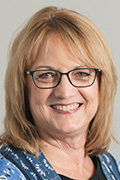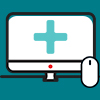Blog
How do you keep up with the happenings in healthcare?
As 2020 has shown us more clearly than ever before, healthcare in the U.S. must change drastically for our country to provide better care to all Americans at less cost. Unfortunately, it still seems that for those in a position to enable change, there are 1,001 proposals on how to do it.
We are a country in disagreement, with a severely fragmented approach to our own healthcare transformation. Any government efforts to drive change continue to be divisive. Many different models of care and payment delivery are being explored by different health systems, hospitals, and care providers across the country—from Accountable Care Organizations (ACOs) to patient-centered medical homes to concierge practices. As I write this, the Affordable Care Act (ACA) continues to be under siege, with yet another challenge to this law scheduled to be heard at the Supreme Court in November.
Plus, the response to the COVID-19 pandemic has inserted new innovations – and new problems – into our system. For example, COVID-19 drove telehealth adoption in unexpected ways. By some reports, the U.S. telehealth market is expected to see 80% year-over-year growth, and about 76% of hospitals are now connecting with patients remotely. But there are already indications that the payment system may not be permanently adjusted for this new care delivery model.
The good news? There is a general consensus that change does indeed need to happen. We are actively driving toward it, albeit in a thousand different ways. Many important healthcare system decisions are being made in legislative chambers, in payor or health system offices, and in physician practices around the country. For anyone connected to or working in the healthcare industry, it is both challenging and necessary to remain well versed on what is happening with providers, payors, and patients.
I cannot imagine working in a more interesting industry at a more challenging time. But, there is so much going on, it’s hard for me to keep track!
My approach to absorbing and synthesizing information is to divide it into a few key subjects of interest. My top areas of interest are these four big elephants that remain in the room of healthcare:
- COVID-19 impacts and guidance
- Evolving the U.S. healthcare payment structure
- Eliminating health disparities (especially those based on socio-economic status)
- Preventing medical errors
Who Are My Favorite Sources?
COVID-19 impacts and guidance
I read and listen to the scientists who are the most knowledgeable about this virus. Because of the large amount of misinformation being propagated, I try to stay focused on resources that are not politically-motivated and are scientifically sound. Here are a few examples:
- National Institutes of Health (NIH): COVID-19 news
- Anthony Fauci, MD, National Institute of Allergy and Infectious Diseases (NIAID) Director
- Michael T Osterholm, PhD, MPH, University of Minnesota Center for Infectious Disease Research and Policy (CIDRAP)
- The New England Journal of Medicine
- Harvard T.H. Chan School of Public Health
- Kaiser Family Foundation
- Atul Gawande
- These 50 experts to trust in a pandemic
Changing the healthcare payment structure
Of course, the healthcare payment structure is a major sticking point. Hospitals and health systems need to effectively move from a completely fee-for-volume model to a fee-for-quality model, or more simply, from order to outcomes. High-profile examples of new fee-for-value models include ACOs and patient-centered medical homes, although there are others out there.
For news about evolving payment models, I turn to publications like Modern Healthcare, HealthLeaders, and Healthcare Financial Management Association (HFMA), as well as more general business publications like Forbes, The Wall Street Journal, and the Harvard Business Review. I find that McKinsey offers some of the most in-depth analyses of healthcare economics that I have read, so I try to keep up with their articles. One of my favorite authors is Forbes contributor Dan Munro, who writes about the intersection of healthcare innovation and policy. I often seek out thought leadership from Jane Sarasohn-Kahn, a health economist and management consultant, blogging at HealthPopuli. Her unique background brings a fresh perspective to many healthcare issues.
Eliminating socio-economic disparities
The sad reality is that the U.S. is still a country where citizens who have lower socioeconomic status receive poorer healthcare. Front and center now is the mounting evidence that some minority groups are being disproportionately affected by COVID-19. These and many other disparities in public health represent a challenge to all of us. There are models of care delivery and payment that will work to build a bridge over such disparities, but the industry has been slow to embrace them for a variety of reasons.
My go-to sources for public health news are some of the major players: The National Institutes of Health, The Centers for Disease Control and Prevention, and the Institute for Healthcare Improvement. One of my favorite thought leaders in this space—and a wonderful speaker—is Dr. Jeffrey Brenner. He was the founder of the Camden (N.J.) Coalition of Healthcare Providers. His community of care providers in New Jersey demonstrated that a model of cooperative care can reduce repeated emergency room visits and hospitalizations and lower care costs in one of the lowest socio-economic regions of the country. However, Dr. Brenner has been quieter on this subject since joining UnitedHealthcare in 2017, which is disappointing. The Kaiser Family Foundation has done some excellent analyses about disparities in care in the U.S. as well, especially racial disparities. Finally, the Robert Wood Johnson Foundation offers leadership in many aspects of health equity and health literacy in the U.S.
Preventing medical errors
Since the landmark report “To Err Is Human” was published by the Institute of Medicine in 1999, we’ve scarcely moved the needle to building a safer healthcare system. That report found that more people die each year from medical errors in U.S. hospitals than from traffic accidents, breast cancer, or AIDS. It shocked providers across the nation. Fifteen years later, co-author Dr. Molly Joel Coye, chief innovation officer of UCLA Health System, says that while a whole field has emerged to design and test intervention, the result is not yet good enough. Dr. Coye says technology, such as apps and other tools that integrate into the EHR, is key to reducing errors. She believes, and I agree, that when clinicians and patients have the right information and easy-to-use support tools at hand, their own intrinsic motivation is a powerful force for change. However, there have been several studies indicating that EHRs still need significant improvement to enable better care. I recommend a recent study published March 2020 in JAMA Network that indicates that while EHRs have enabled improvement in the quality of care, they still fail to detect up to 33% of medication errors.
To keep abreast of the progress in reducing medical errors, I read anything and everything that Atul Gawande writes and watch videos of his speeches and various panels. He is one of the most eloquent and meaningful advocates about how to improve the U.S. healthcare system. Also, in May 2020, there was an excellent study published by NCBI about medical error prevention, which published root causes and prevention methods for many different types of errors in the healthcare setting. The National Center for Biotechnology Information (NCBI) is part of the United States National Library of Medicine, a branch of the National Institutes of Health.
To stay up-to-date in the healthcare IT space, I often reference four of the most influential member associations: CHIME (College of Healthcare Information Management Executives), AMDIS (American Medical Directors of Information Systems), AONL (American Organization for Nursing Leadership), and HIMSS (Healthcare Information and Management Systems Society). I also love starting my day with the HIStalk blog and The Healthcare Blog (THCB), both of which are sure to be controversial and thought-provoking.
Sharing with the healthcare community
For all of the aforementioned areas, social media is a fantastic resource to find great content. Hootsuite is one of the first tabs I open in my browser window each morning because I learn so much from articles that appear in my LinkedIn and Twitter feeds.
Some of the handles I follow on Twitter are:
@HealthLeaders
@AmerMedicalAssn
@kevinMD
@Health_Affairs
@KFF
@ASlavitt
@Atul_Gawande
@ChilmarkHIT
@MLMillenson
@Doctor_V
@Farzad_MD
@healthythinker
@pewinternet
@SusannahFox
@chasedave
@john_chilmark
@RWJF
I would love to hear from you. How do you stay afloat in the sea of information? What or who are your favorite sources for healthcare industry news? Do you incorporate social media into your information gathering process? Please feel free to connect with me on LinkedIn.
Editor’s note: This post was originally published in February 2015 and has been updated for relevancy and accuracy.







